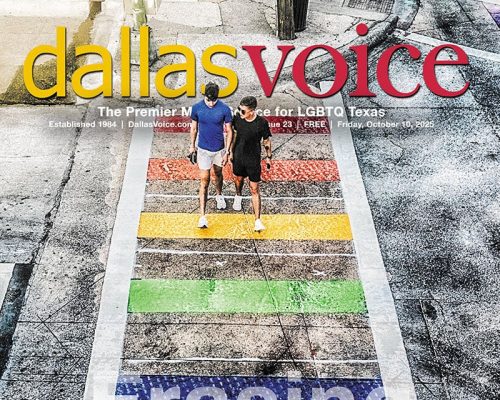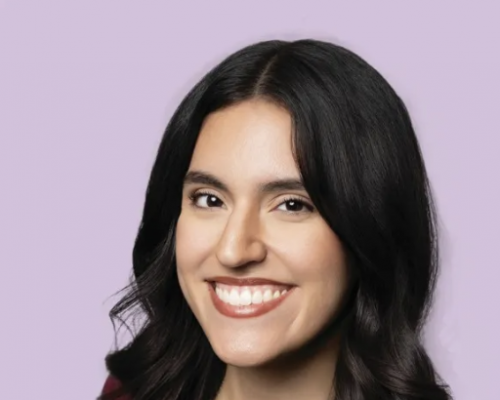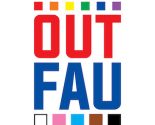
Publications plan outreach to new readers as LGBTQ population grows
by Joe Siegel
A newly released study has shown an increase in the LGBTQ population in the United States, which means a large untapped market of potential readers for LGBTQ newspapers and websites.
The Williams Institute on Sexual Orientation and Gender Identity Law and Public Policy at the UCLA School of Law finds the LGBTQ population in the U.S. is now the largest ever recorded and growing exponentially every few years.

This new research — a 17-page study — estimates the percentage and number of LGBTQ adults at the national, state and regional levels.
According to the new data, 13.9 million adults in the U.S. identify as LGBTQ, 5.5 percent of the country’s total population, which is an entire percentage point more than their last report. In 2020, the Williams Institute reported the LGBTQ population represented 4.5 percent of the population or 11.3 million adults. The new study signifies an increase of 2 million adults, and other data in the study suggest the queer and trans populations will continue to grow at a steady pace in the coming years.
Key data points within the study will surprise many, like one point illustrating that more LGBTQ adults live in the South than in any other region. “More than half (57.0%) of LGBT people in the U.S. live in the Midwest (21.1%) and South (35.9%), including 2.9 million in the Midwest and 5.0 million in the South. About one-quarter (24.5%) of LGBT adults reside in the West, approximately 3.4 million people. Less than one in five (18.5%) LGBT adults live in the Northeast (2.6 million),” according to the report.
The place with the highest percentage of LGBTQ adults is Washington, D.C., at an outsized 14.3 percent and 81,400 people.
Based on the study, editors and publishers of LGBTQ publications say they are excited about the prospect of expanding their readerships.
Kevin Naff, editor of the Washington Blade, said the publication plans on “investing in new technologies to expand our targeting capabilities and grow our membership and subscription base.”
“We continue to improve our online capabilities in reaching more LGBTQ people,” said Tracy Baim, co-founder of Chicago’s Windy City Times. “This year we will be launching a new website, our first major update since we did our first website in the mid-1990s.We are also launching newsletter products, and in general trying to keep on top of new technology and social media opportunities.”
Mark Segal, founder and publisher of the Philadelphia Gay News, said the publication has always reached out to readers in rural areas as well as urban areas.
“Our mission is to serve our region,” said Segal. “We have always understood that our community is spread throughout the tristate area (Pennsylvania, New Jersey and Delaware) and we do our best to cover those parts of the community.”
Segal makes the point, however, that many areas with large LGBTQ populations do not have their own LGBTQ media outlets, which amounts to missed opportunities. “It is my hope,” said Segal, “that others in places like Kansas or Kentucky create local LGBT media of their own. No one serves local LGBT readers better than local LGBT media.”
Unsurprisingly, states with the largest number of LGBTQ adults are also the states with the largest populations — California has the most LGBTQ people (1,549,600). But as a percentage of California’s population (5.1 percent), that’s actually lower than the overall percentage nationwide. Texas, the second most populous state after California, has 1,071,300 LGBTQ people, but like California, it’s only 5.1 percent of the state’s total population. New York has 853,600 LGBTQ people but only 5.4 percent. In terms of percentages, the states with the highest percentages were found in New England and the Pacific Northwest.
The top ten states with the largest percentages of LGBTQ people are, from 1 to 10, including those with tied percentages: Oregon at 7.8% (253,300), Delaware at 7.5% (56,600), Vermont at 7.4% (37,600), New Hampshire at 7.2% (78,400), Washington at 6.9% (398,700), Colorado at 6.8% (294,500), Nevada at 6.6% (150,100), Massachusetts at 6.5% (356,200), Maine at 6.5% (69,900), Rhode Island at 6.5% (54,800), Tennessee 6.3% (328,900), Minnesota at 6.3% (267,600) and Ohio at 6.2% (557,600).
The states with the lowest percentages of LGBTQ people are, according to data from the ACLU, states with among the most anti-LGBTQ legislation. Mississippi (93,300) and West Virginia (60,000) led with only 4.1 percent of the population being LGBTQ; Mississippi has 25 proposed anti-LGBTQ+ laws and West Virginia has 12. North Carolina (353,100) has 4.4 percent and 11 anti-LGBTQ laws. Alabama has 4.6 percent (173,000) and six anti-LGBTQ laws.
TOP STORY
Volume 25
Issue 10








